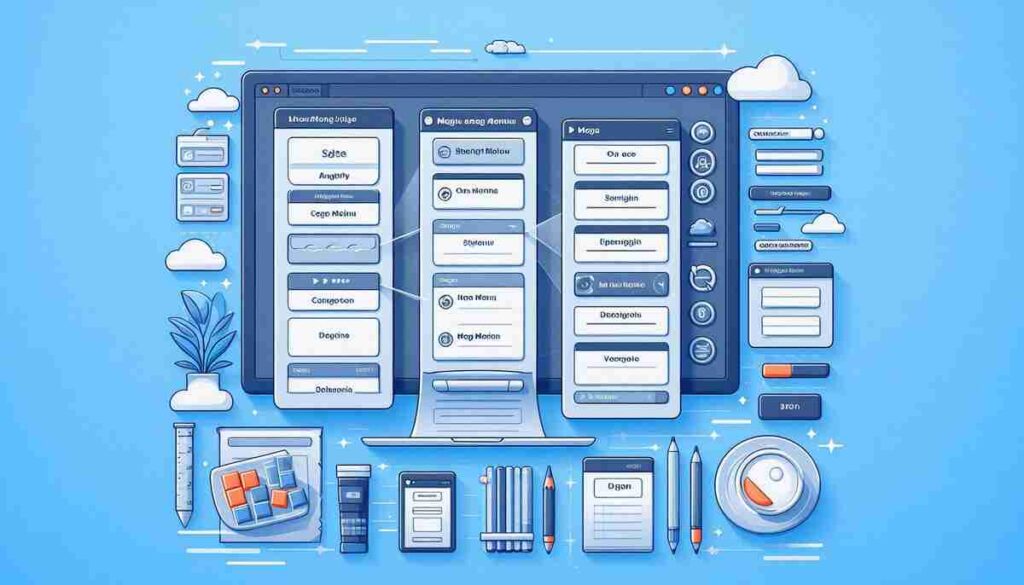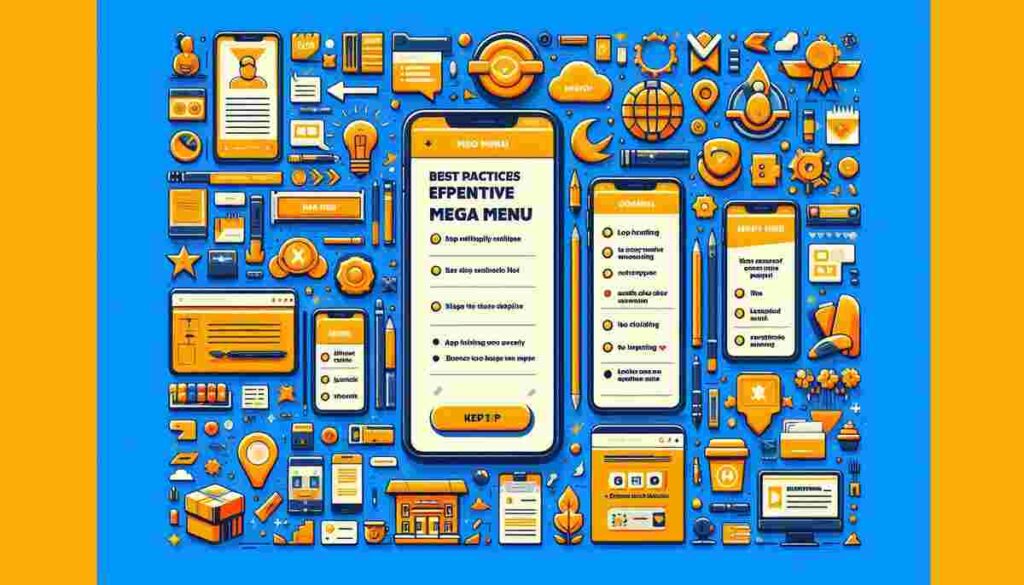Elementor Mega Menu: On Your WordPress Website
Elementor Mega Menu

Elementor Mega Menu In the dynamic world of web design, creating a seamless and intuitive navigation experience is paramount. An Elementor Mega Menu is a powerful tool that can transform your website’s user interface, making it easier for visitors to explore your content. In this comprehensive guide, we will walk you through everything you need to know about creating an effective Elementor Mega Menu that not only enhances the user experience but also boosts your website’s SEO performance.
Understanding the Elementor Mega Menu
What is an Elementor Mega Menu?
An Elementor Mega Menu is an advanced navigation menu that allows you to display a large amount of information in a structured and visually appealing manner. Elementor Mega Menu Unlike traditional drop-down menus, a mega menu can include a variety of content types such as images, videos, icons, and multiple columns of links. This type of menu is especially useful for websites with a broad range of categories, products, or services.
Why Use an Elementor Mega Menu?
The use of an Elementor Mega Menu offers several advantages:
- Enhanced User Experience: A well-designed mega menu provides users with a clear overview of your site’s content, making it easier for them to find what they are looking for.
- Improved SEO: By organizing your content effectively, a mega menu can help search engines understand your site’s structure, leading to better indexing and higher rankings.
- Increased Engagement: Interactive elements like images and videos in your mega menu can capture users’ attention and encourage them to explore more pages on your site.
- Mobile-Friendly Navigation: Elementor Mega Menus are responsive, ensuring that your site’s navigation remains user-friendly on all devices.
How to Create an Elementor Mega Menu

Step 1: Installing the Necessary Plugins
To create an Elementor Mega Menu, you will need to install Elementor and the Elementor Pro plugin, which unlocks advanced features such as the mega menu. Content Marketing for Network Additionally, you may need to install third-party plugins like JetMenu or Max Mega Menu for more customization options.
Step 2: Planning Your Menu Structure
Before diving into the design process, it’s crucial to plan the structure of your mega menu. Consider the following:
- Categories and Subcategories: Identify the main categories and subcategories that will be included in your menu. Group related content together to create a logical flow.
- Content Types: Decide on the types of content you want to display, such as text links, images, icons, or videos. This will help you determine the layout of your mega menu.
- User Journey: Think about how users will interact with your menu. Ensure that the most important links are easily accessible and that the menu is intuitive to navigate.
Step 3: Designing the Mega Menu

Now that you have a clear plan, it’s time to start designing your Elementor Mega Menu. Follow these steps:
- Create a New Section: In Elementor, create a new section where your mega menu will be displayed. This section will serve as the container for your menu items.
- Add Columns: Divide the section into columns based on your planned structure. For example, if you have three main categories, create three columns.
- Insert Widgets: Use Elementor’s widgets to add content to your mega menu. You can include text links, images, icons, and even videos. Customize each widget to match your site’s branding.
- Style the Menu: Use Elementor’s styling options to customize the appearance of your mega menu. Adjust the colors, fonts, spacing, and hover effects to create a visually appealing design.
- Make It Responsive: Ensure that your mega menu looks great on all devices. Use Elementor’s responsive settings to adjust the layout for mobile and tablet views.
Step 4: Adding the Mega Menu to Your Website
Once your mega menu design is complete, you need to add it to your website. Here’s how:
- Assign the Mega Menu to a Navigation Menu: In your WordPress dashboard, go to Appearance > Menus and select the menu where you want to add your mega menu. Assign your Elementor section as the mega menu for the selected menu item.
- Test the Menu: Preview your website and test the mega menu to ensure it functions as expected. Check for any issues with links, hover effects, or responsiveness.
- Publish Your Changes: Once you are satisfied with the design and functionality, publish your changes to make the mega menu live on your site.
Best Practices for an Effective Elementor Mega Menu

Keep It Simple and Organized
While a mega menu allows you to display a lot of information, it’s important not to overwhelm users. Keep your menu organized and avoid cluttering it with too many options. Use clear headings and group related items together.
Use High-Quality Visuals
Visual elements like images and icons can enhance the appeal of your mega menu, but only if they are high-quality and relevant. Avoid using generic or low-resolution images, as these can detract from the user experience.
Prioritize Important Links
Ensure that the most important links are prominently featured in your mega menu. These could be your top categories, best-selling products, or most visited pages. Elementor Mega Menu Prioritizing these links will help guide users to the content that matters most.
Optimize for Speed
A slow-loading mega menu can frustrate users and negatively impact your SEO. Optimize your images, minimize the use of heavy scripts, and test the menu’s performance on different devices to ensure it loads quickly.
Test and Iterate
After launching your mega menu, monitor its performance using tools like Google Analytics. Pay attention to user behavior, such as how often the menu is used and which links are clicked the most. Elementor Mega Menu Use this data to make informed adjustments and improve the menu over time.
Conclusion
An Elementor Mega Menu is a powerful tool that can significantly enhance your website’s navigation and user experience. By following the steps outlined in this guide, you can create a mega menu that is not only visually appealing but also highly functional and optimized for SEO. Remember to keep your menu simple, organized, and responsive, and always prioritize user experience.
Read More: WordPress Plugins for Boosting

